"The Jewish Wardrobe" part one
Posted by Regine Tessone-founder of Aqua Modesta the Original Modest Swimwear Line on 6th May 2015
“THE JEWISH WARDROBE” Part one The Israel Museum in Jerusalem is currently running the “Jewish Wardrobe” exhibit. Part of the exhibit displays beautifully ornate costumes worn throughout the Middle East by Jewish men, women, and children from countries such as Afghanistan, Iran, Iraq, Algeria, Morocco, Libya, and Tunisia. The clothing underscores the roles of ceremonial dress in life cycle events. Marriage, birth, and death constitute climatic moments in a person’s life. Birth is the entry into the world, and death is the departure from it. Marriage and birth concretize a yearning for continuity, while death represents departure from this world and preparation for the world to come. The Magen David ( star of David) was embroidered in this particular wedding dress from Iran.
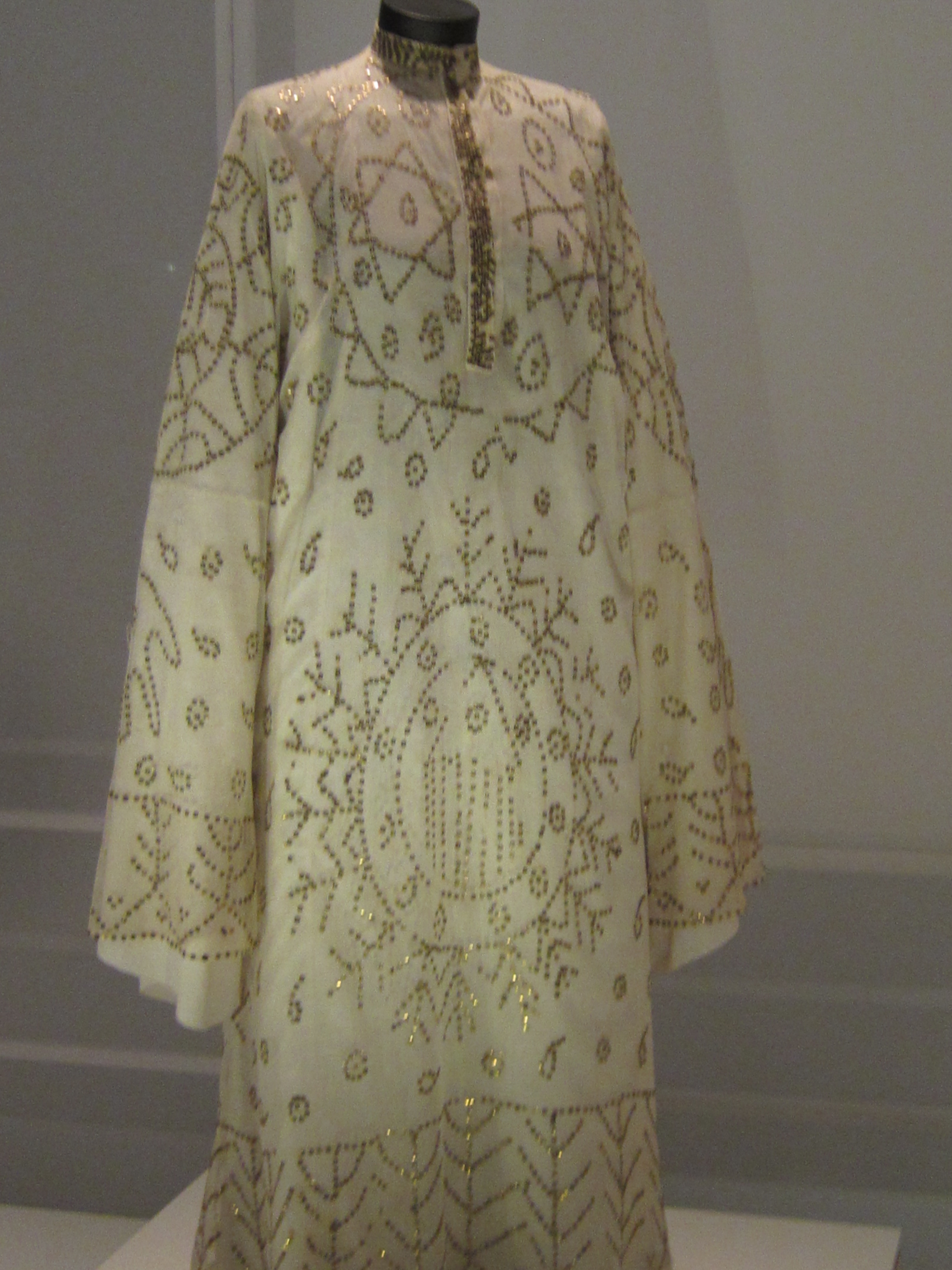
In Sana’a, Yemen, the “Lulwi” ceremonial dress women wore for receiving guests after childbirth would subsequently be used in her shrouds upon burial. Thereby, the fabrics of her life are recycled, signifying the two primary cycles of her life: birth and death.
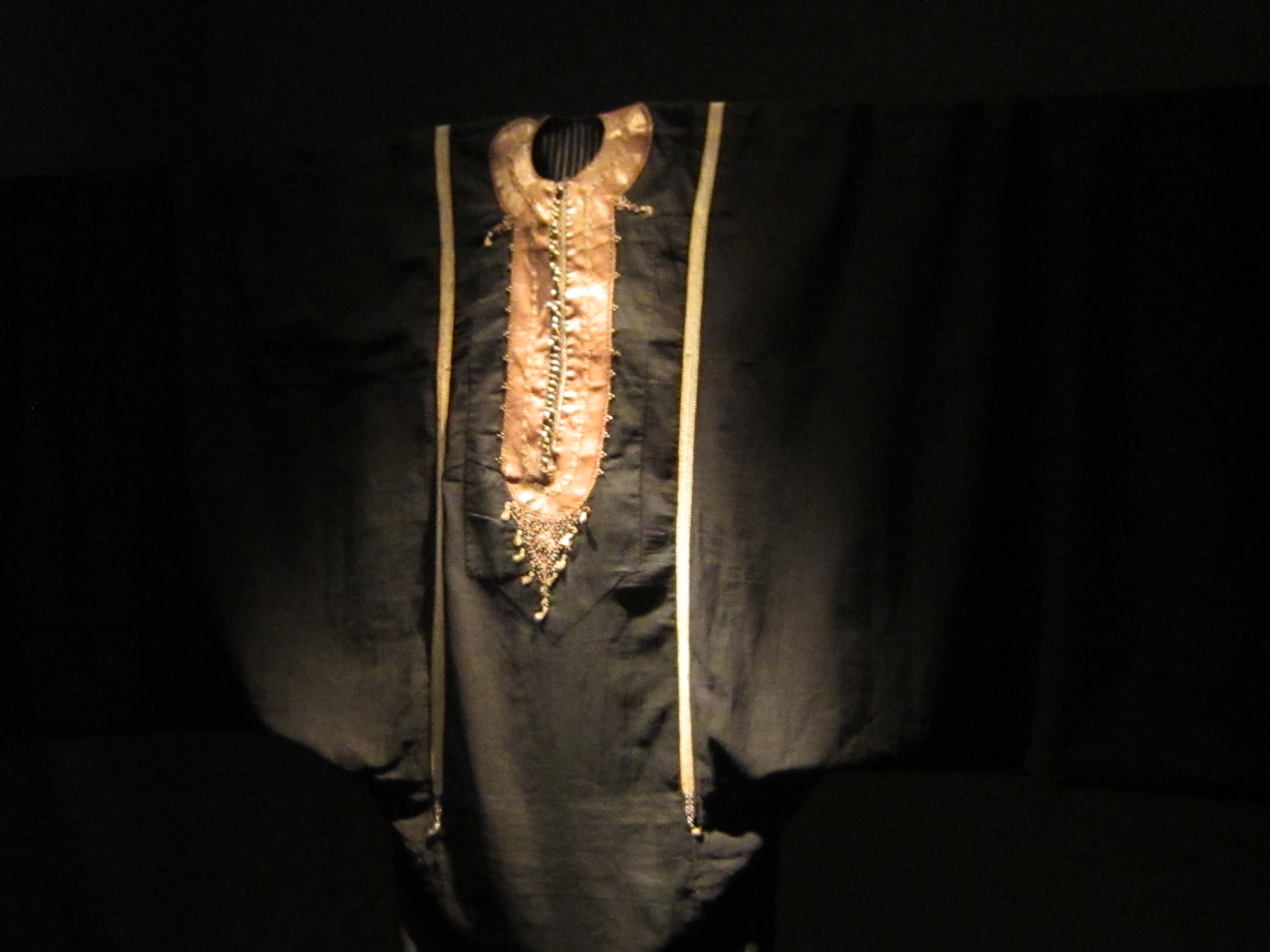
Other times, such as in Baghdad, Iraq, the robe or gown the woman would wear upon her wedding day would later be used to create a beautiful Torah ark cover. You may ask, what is the connection of the wedding day to the Torah? Once more, the garments represent the well-known metaphor that when the Jewish people received the Torah from Har-Sinai (Mount Sinai), it was like a wedding day between men and G-D. The Torah symbolizes the wedding ring. The groom is G-D, and the Jewish people represent the bride.
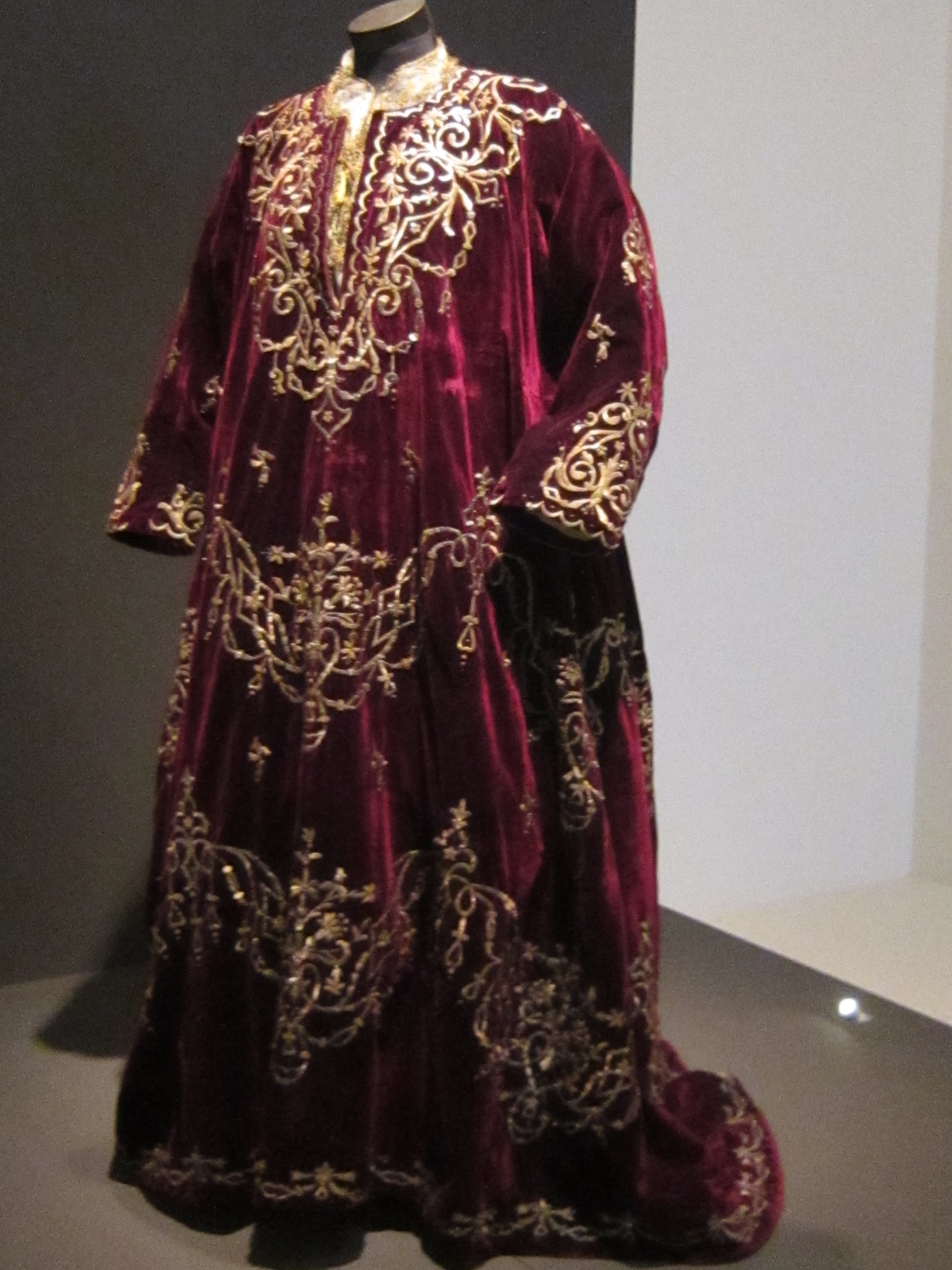
Women in Uzbekistan and Georgia were given black/crème printed silk head scarves as part of their wedding trousseau, which they would subsequently use in a mourning period. As for Persian and Bukhara Jews, family members would bring the mourners new clothes after the year to help them move out of mourning.
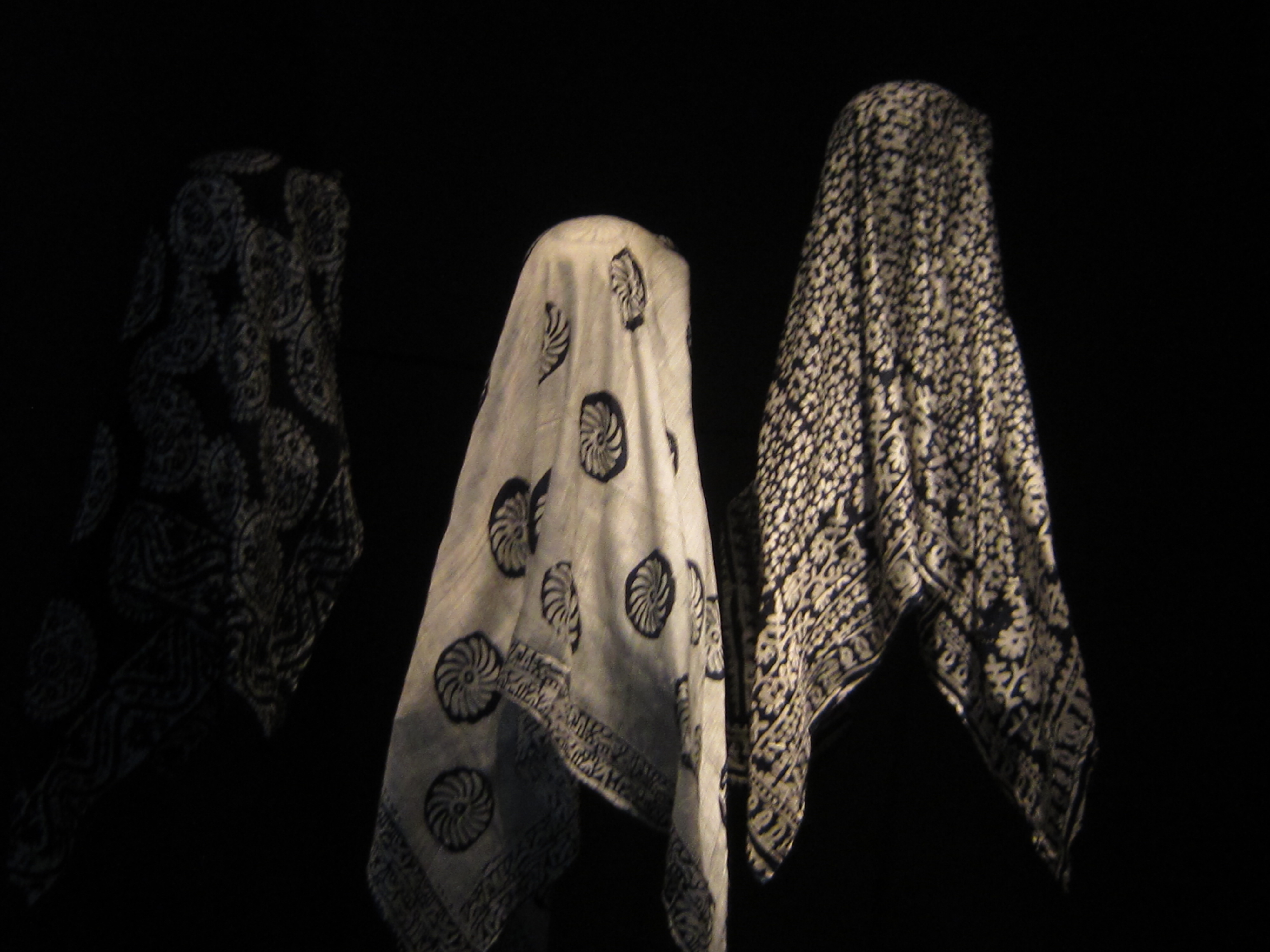
It was most interesting to see how communities such as Baghdadi Jews and Egyptian Jews would dress their sons for circumcision in gowns to look like girls to confuse the angel of death and ward off the evil eye so no harm should come upon the baby boy upon circumcision. The gowns/dresses were often made of silk with ornate tinsel embroidery of gold.
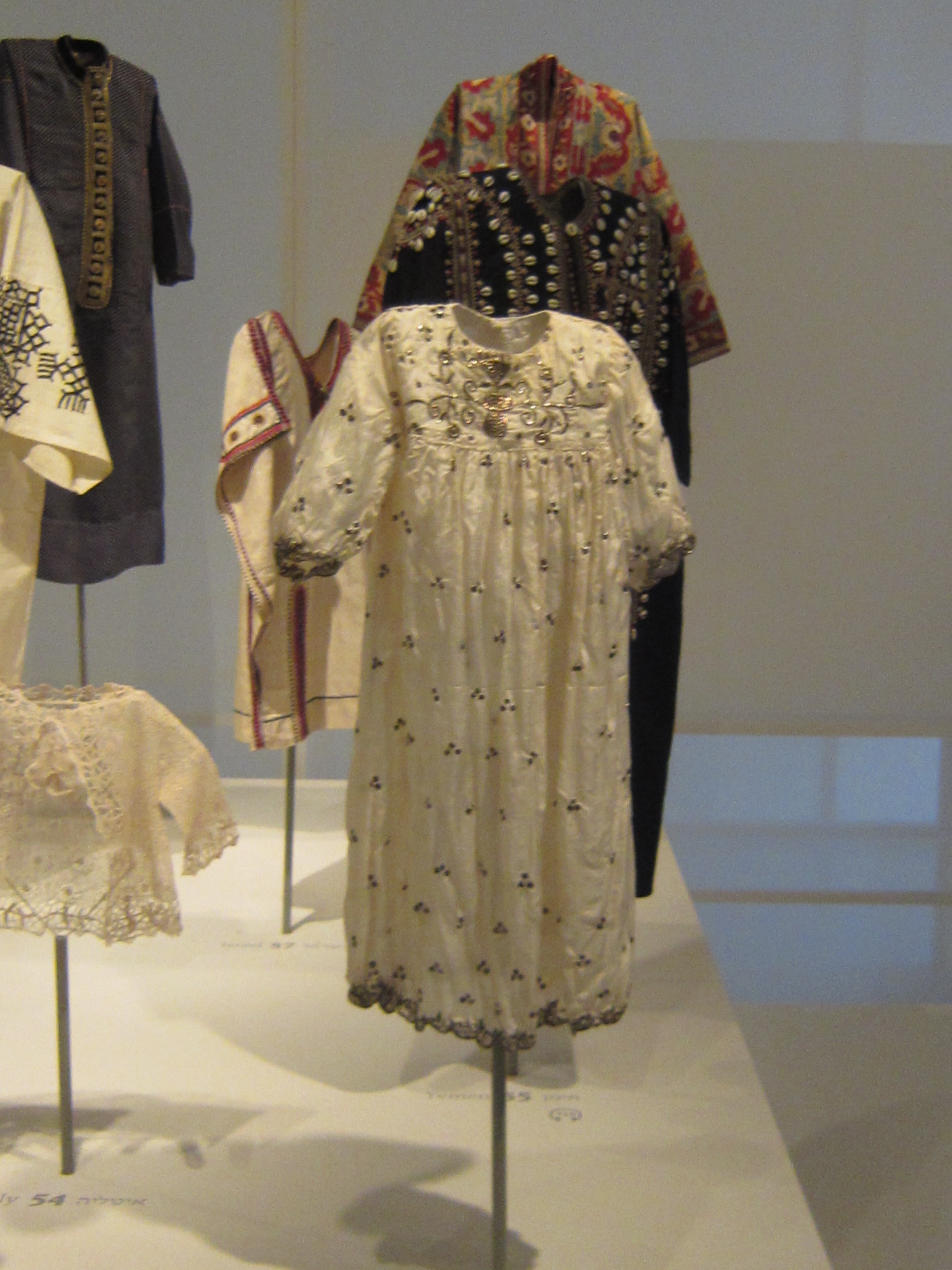
Jewish men are instructed to wear a “Tallit Gadol”- a daily prayer shawl, on the Sabbath and holidays. The Ashkenazim wear the “Tallit Gadol” after they are married. The exception to this rule for Ashkenazim is the Jewish boys of German descent that wear them before marriage. The Tallit is a rectangular fringed shawl that covers the neck and shoulders and typically extends down the back. Sometimes, they hide their head with it depending on the occasion and the wearer’s custom. The meaning attributed to the tassels is explicitly stated in Halachic texts. It is mainly expressed through non-verbal gestures like looking at them and kissing them or using them reverently to touch the Torah scroll. In some communities, such as in Germany, the men wore very ornate Tallitim (prayer shawl worn over the clothing) in the 18th and 19th centuries. They were often made of silk damask, applique panels, and ribbed brocade.
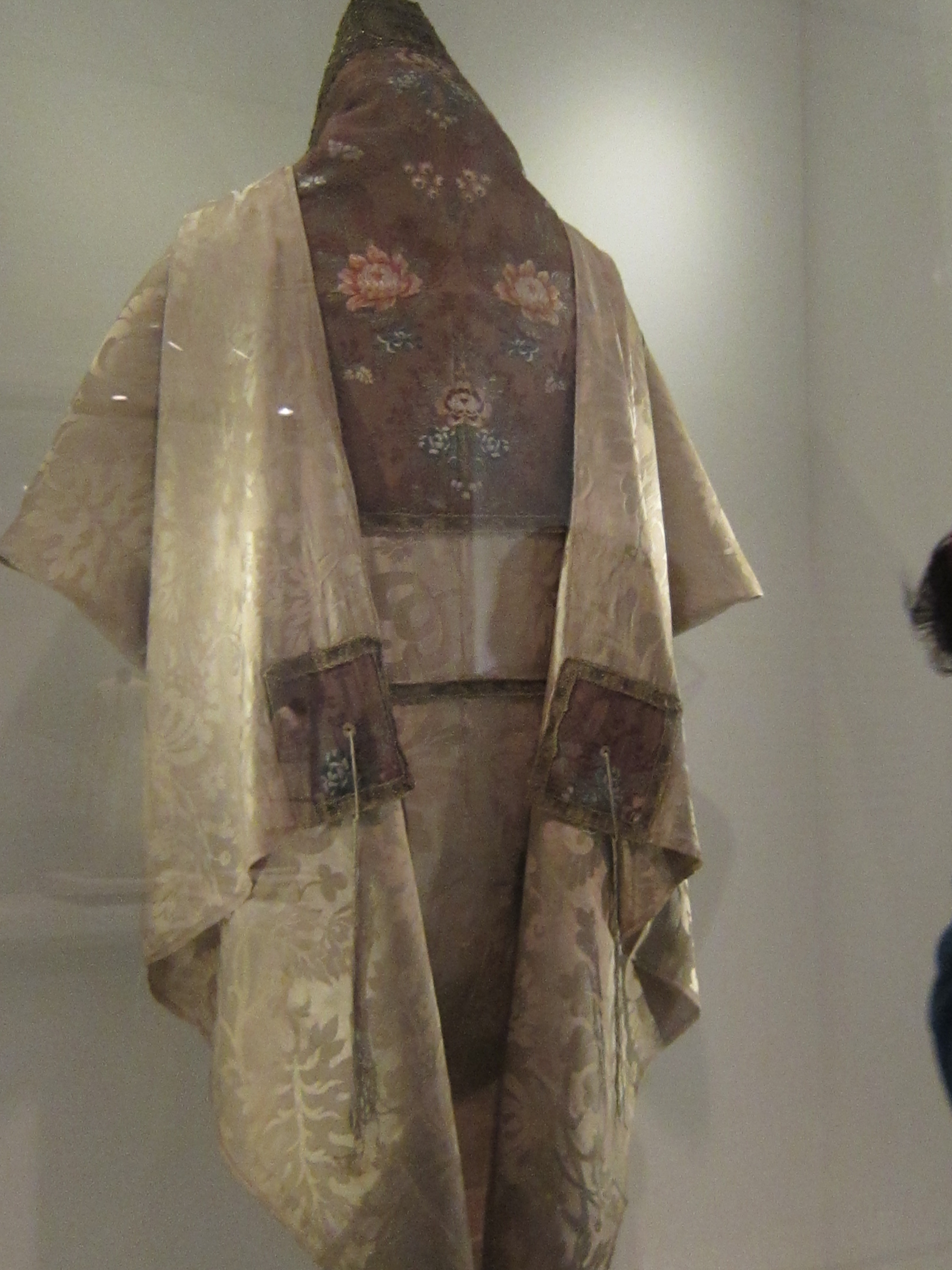
Whether living in Jerusalem or New York, the Hassidic Rebbes often wore and currently wear very festive-looking Sabbath coats over their sabbath suit pant and shirts. They are made of silk, velvet bands, and applique.
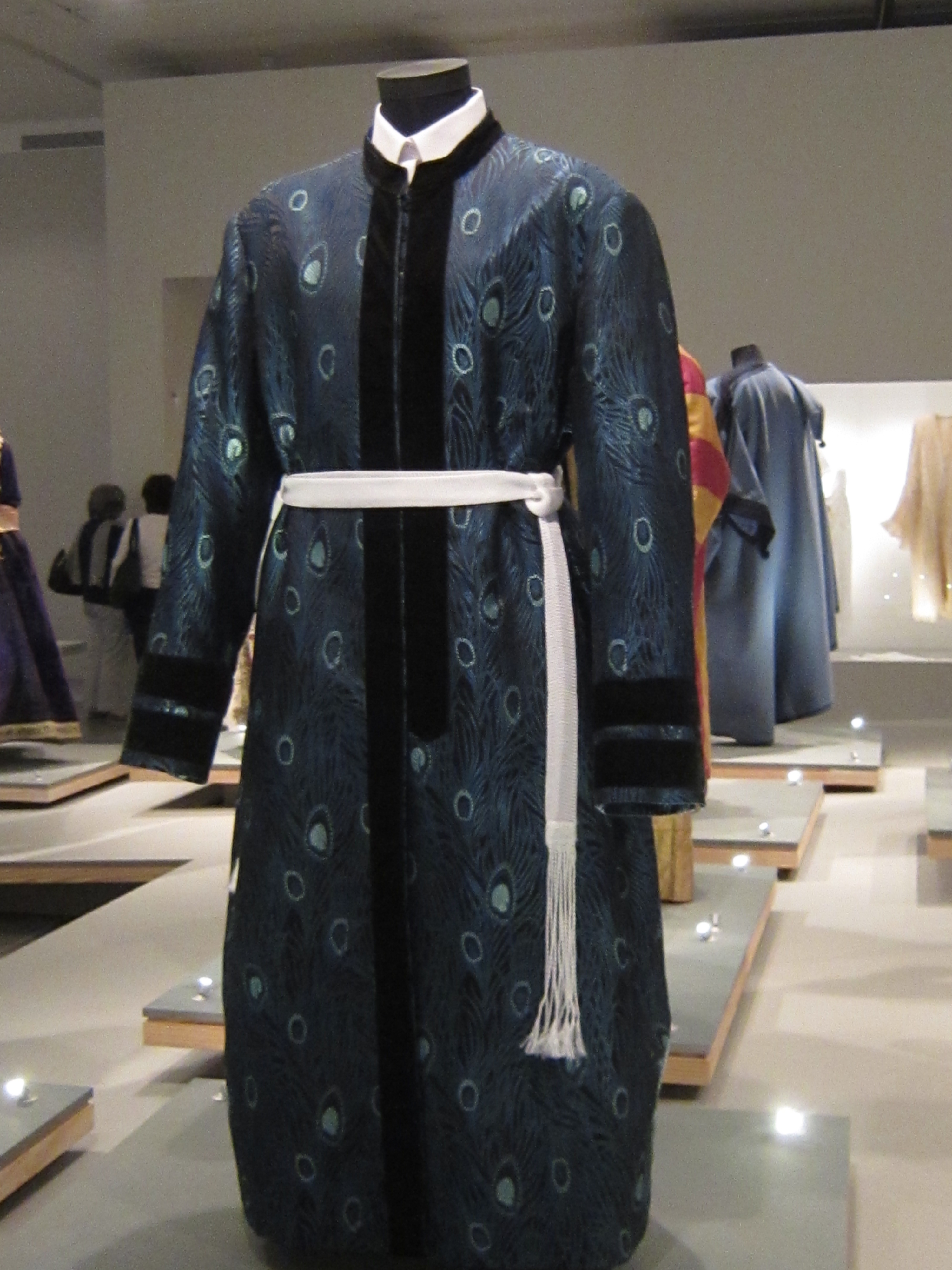
The belt worn over the coat does not just serve as an accessory but has a deep symbolic meaning about modesty and procreation. Belts send a message- divide the body and conceal and protect the procreative organs. In Jewish religious practice, they separate the upper part of the body, considered spiritual and pure, from the lower leg, considered impure and mundane. Women, too, wore the belt to separate the upper body from the lower body. The belt also reminded women to be modest and provided symbolic protection for their fertility organs. Belts sometimes indicate the personal or social status of the wearer. In rural and urban Morocco, Jewish and Muslim women and newly married women wore elaborately woven belts. Like hair coverings, these belts reflected the status of married women. On Shabbat, however, the Jewish women took off their belts, wishing to be distinguished as Jews on that day.
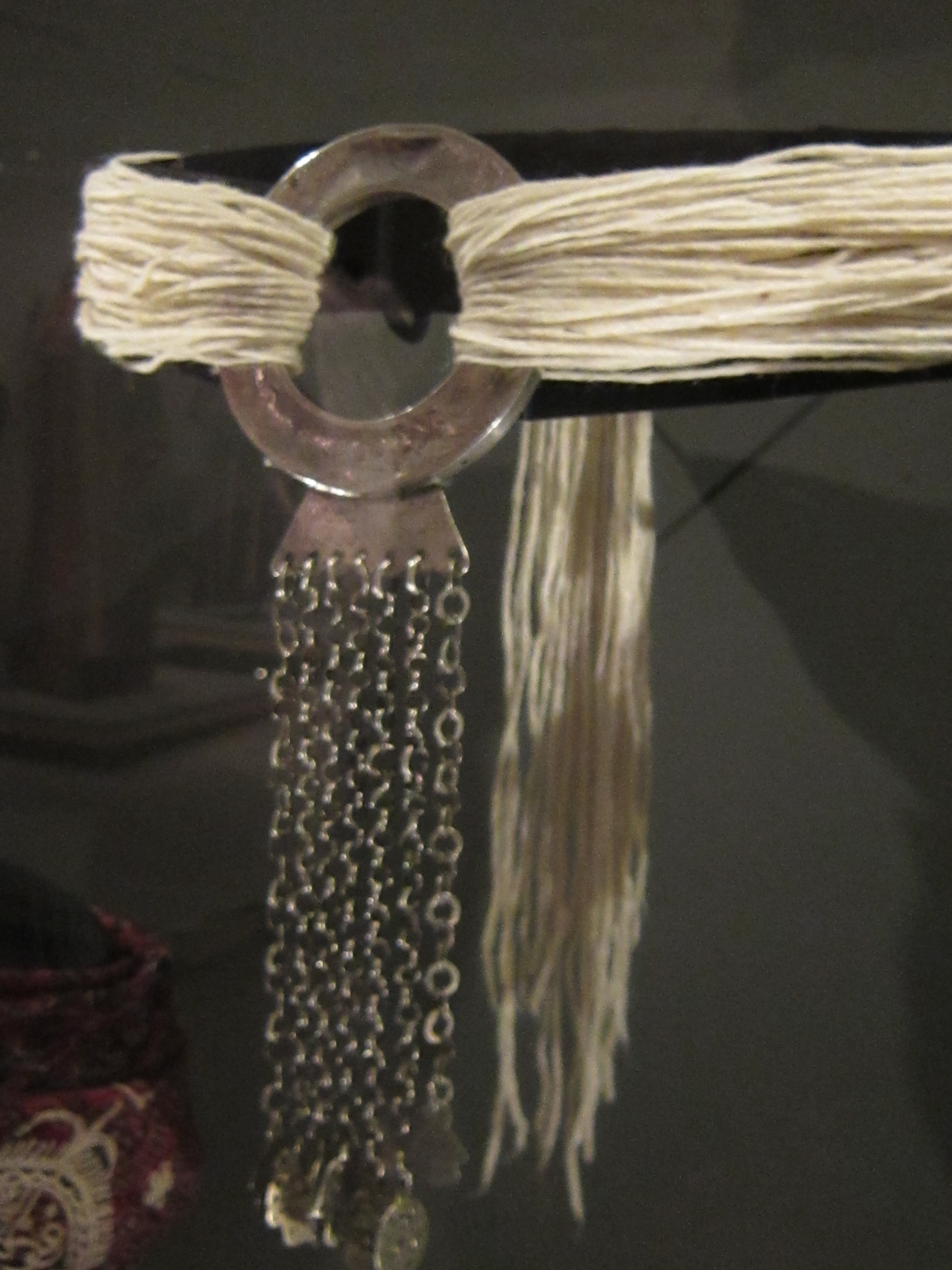
Please read part two for more on The Jewish Wardrobe.
